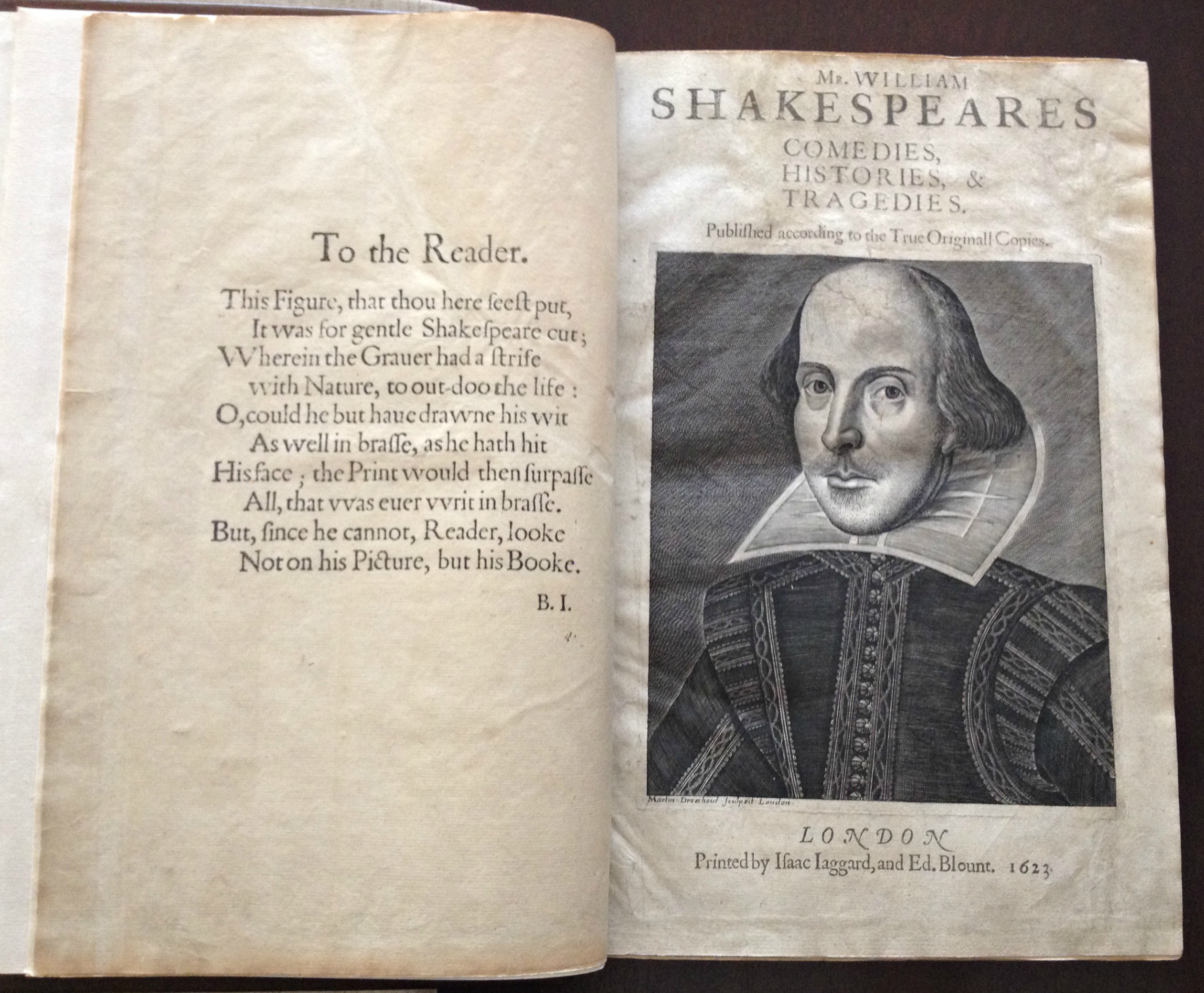Four Hundred Years Later, He’s Still Around – Right Here In North Texas
ArtandSeek.net April 22, 2016 56This month marks the 400th anniversary of William Shakespeare’s death. In North Texas, we’ve been seeing film screenings, performances, readings, even a pub crawl this weekend. Art & Seek’s Jerome Weeks sat down with local ‘All Things Considered’ host Justin Martin to talk about one significant Shakespearean item we have right here: our very own First Folio.
A folio. Interesting, wow.
That’s incredible.
So . . . what’s a folio?
I’m uh, asking for, you know, the listeners who might not know.
So folios were the big, expensive books, the important ones. That’s why it was significant when after William Shakespeare died in 1616, two of his fellow actors, John Heminges and Henry Condell, collected all of the play scripts they could find and published them in a single folio. The only person who’d done that before — with the scripts of stage plays — was Shakespeare’s friend and competitor, Ben Jonson. He came out with what he called ‘Works’ in 1616 — and caught a lot of mockery for being so pretentious. Stage plays did not have the dignity and authority of poetry or history or religious tracts.
So what Heminges and Condell did was an act of reverence. It said, ‘Our friend’s plays are worthy of this monument.’ And that edition is what we call the First Folio.

Krysta Scott of TCU and Brian Collins of the Dallas Public Library check out ‘Macbeth’ in the library’s First Folio. Photo: Jerome Weeks
Why is it so important? I mean, yes, these are Shakespeare’s play, and it was a nice gesture but it’s an edition of Shakespeare’s plays. It’s not like there aren’t millions of them.
So it’s the 400th anniversary of Shakespeare’s death. Why is the Folio, in particular, getting so much attention this year?
Now, if North Texans feel a little left out, we shouldn’t. We already have our own First Folio.
Where?
So they keep it in a vault somewhere?
But earlier this week, Brian Collins — he’s the manager of the library’s Dallas history and archives division — he brought out the Folio. And I thought I’d share seeing it with someone who teaches Shakespeare but had never seen the folio in person. Krista Scott is a TCU professor and is a director and vocal coach for local theater companies.
But just as she and I were about to enter the library’s boardroom to see the Folio, Brian took us aside.
“Before handling it,” he said, “if you wouldn’t mind just washing your hands, and there’s a sink right in there.”
Were you all eating? Why would you wash your hands?
And then, there we were — in the boardroom, with the Folio laid out on two book rests. We were turning the pages of a book that could well have been handled by Shakespeare’s own fellow actors, 400 years ago.
I asked Krista — in the course of her vocal coaching of actors playing Shakespearean roles — does she ever consult the text of the Folio itself?
“I have used a facsimile of the First Folio in a couple of instances,” she said “The difference is really in the spelling with S’s looking like F’s and things like that. But for actors, it’s really about punctuation.”

Dallas’ First Folio was restored after the Dallas Shakespeare Club bought it in 1984 — and then it was given to the Dallas Public Library two years later.
Punctuation?
One weakness with this argument is that it’s believed every Folio is actually different. The printers were constantly editing and proofing the book as they published it, so they corrected things, introduced new errors, even dropped whole plays. The Folio has been gone over so minutely, scholars can tell that some of it was proofed by a younger printer who was particularly ‘prone to mistakes.’
Each one’s different?
So how’s our folio look? How does it compare to them?
So — with proper care, the Dallas Folio could last another 400 years
Thanks, Jerome.










